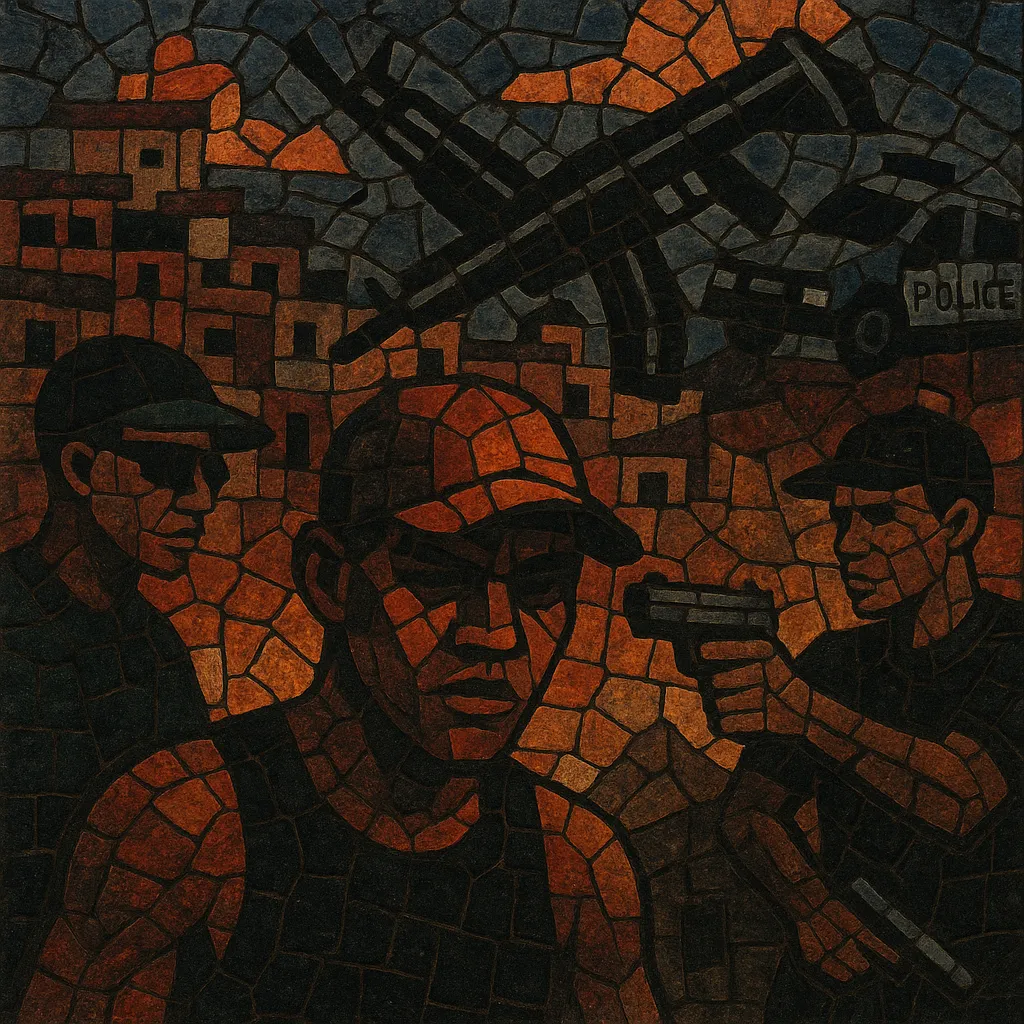Funk proibidão is a hard-edged substyle of Rio de Janeiro’s baile funk (funk carioca) whose lyrics and sonic palette reflect the realities of life in the favelas. It is characterized by aggressive vocal delivery, chant-like hooks, and the iconic tamborzão drum pattern driving dense layers of 808 kick, claps, and syncopated percussion.
Lyrically, proibidão often narrates or glorifies the conflicts and power structures of local drug factions, which makes it controversial and rarely suitable for mainstream media. The music traditionally circulated via baile sound systems, street CDs, and later through YouTube and messaging apps, maintaining an underground, community-centered distribution model.
Musically minimal yet rhythmically relentless, tracks emphasize percussion, sub-bass pressure, sirens, gunshot and police-radio samples, and call-and-response vocals over sparse synth stabs. The result is a dark, high-energy form designed for large, open-air dances and intense crowd participation.
Funk proibidão emerged in Rio de Janeiro’s favelas in the late 1990s as a tougher, more confrontational branch of funk carioca. Early baile funk already drew on Miami bass and electro-funk, but proibidão sharpened the lyrical focus toward gang politics, territorial pride, and everyday survival. The tamborzão beat, booming 808s, and shouted choruses became defining elements, supporting MCs who often performed as voices of their communities.
During the 2000s, proibidão expanded at neighborhood bailes and via informal economies—CD-Rs, street vendors, and community radio. Its explicit references to drug factions fueled moral panic and legal scrutiny, limiting mainstream exposure while reinforcing its underground status. Despite crackdowns, the style remained central to favela party culture, with MCs and DJs tailoring sets to local identities and rivalries.
As YouTube, WhatsApp, and streaming platforms grew, proibidão spread beyond local scenes, even as many tracks remained demonetized or geoblocked. The style’s aesthetic—dark textures, chant hooks, heavy percussion—fed into newer branches of Brazilian funk such as mandelão and trap-leaning hybrids (trapfunk/trap funk). While still contentious due to lyrical content, proibidão continues to influence Brazil’s urban music, codifying a raw, percussive blueprint that producers adapt across regions and tempos.
Proibidão functions as both party music and reportage, documenting social conditions rarely represented in mainstream media. Its sound system culture, MC bravado, and rhythmic innovations have shaped the identity of baile funk worldwide, even when the songs themselves remain too controversial for commercial channels.


